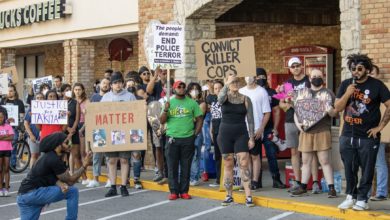The Justice Policy Institute, a Washington, D.C.-based think tank that studies ways to reduce incarceration, released a report on July 18 entitled “Gang Wars: The Failure of Enforcement Tactics and the Need for Effective Public Safety Strategies.” The report was full of useful facts and analysis about the police and gangs.
“Gangs do not drive crime rates, and aggressive suppression tactics simply make the situation worse by alienating
|
Despite the media promotion of crime and violence, there are fewer young people involved in gangs today than 30 years ago. Gang-related crimes account for a relatively small share of overall national crime. There is no evidence that gang membership is increasing.
In fact, when gangs have had the highest membership, youth violence has been the lowest.
The billions of dollars spent on police and prisons have only served to vilify whole communities and send thousands to prison. Gang involvement, a response to poverty and lack of opportunity for working-class youth, has remained at constant levels despite the severe repression.
While gangs are not generally progressive, working-class organizations at this time, they can provide a way to organize resistance to racist repression.
Politicians want more cops
Marxists understand that the capitalist state requires “special bodies of armed” men and women—the police—to do the bidding of the capitalist class and protect the current government and system.
California’s Senator Diane Feinstein and Congressman Adam Schiff, both Democrats, understand this as well. This is why they just introduced legislation that would allot $700 million dollars to so-called “gang suppression activities.”
Helping the police terrorize working-class communities, especially communities of color, remains a priority of both leading capitalist political parties—it’s the way they maintain their rule.
“It’s unfortunate that this new legislation threatens to continue this legacy of waste,” said Judith Greene, another author of the report.
In Chicago, the extreme police repression and high rates of incarceration, coupled with the legacy of racist segregation in the city, has caused gang activity to remain constantly high. The report confirms this. More police repression means more gang activity, not the opposite.
Even so, gangs play a relatively small part in the drug trade. The Los Angeles District Attorney’s office reported that only one in seven L.A. gang members participate in drug sales. This remained consistent across the country, in stark contrast to police sources that claimed that gangs are “the primary retail distributors of drugs in the country.”
Cop racism targets youth of color
According to the report, law enforcement claims that over 90 percent of those in gangs are people of color. But survey data shows that the largest single ethnicity of adolescent gangs is white, accounting for 40 percent.
The Los Angeles Police Department describes on its website the racist ways cops identify gang-involved youth:
|
“Examples are preferences for wearing baggy or ‘sagging’ pants or having baseball caps turned at an angle,” explains the LAPD website.
“Excessive amounts of dark clothing or a predominance of one-color outfits, white t-shirts and levis with upturned cuffs are also indicators of possible gang involvement,” the site continues.
The website not only has racist descriptions of Black and Latino youth, but includes ridiculously subjective details:
“Jewelry: may be expensive or cheap, but the gaudy type is preferred.”
Creating a sense of fear among the general population prevents workers of different nationalities from uniting against common enemies.
The report shows that most young people who join gangs end up leaving the gang within a year. But police profiling promotes the identification of ex-members as “gang members” for the rest of their lives—affecting future job searches and often causing conflict with people in different gangs.
“Young men of color are disproportionately identified as gang members and targeted for surveillance, arrest and incarceration, while white—who make up a significant share of gang members—rarely show up in accounts of gang enforcement efforts,” explains the report.
It continues with a shocking fact: “The Los Angeles district attorney’s office found that half of Black males between the ages of 21 and 24 had been entered into the county’s gang data bases.”
The profiling of young people as gang members is directly related to the racist profiling that law enforcement agencies carry out against people of color in general.
Black and Latino people suffer the most. But they are not the only oppressed people under attack. Racist profiling of Arabs and Muslims is used to justify the U.S. occupation of Iraq and the ongoing plans to dominate the people and resources of the Middle East.
Jobs and education the answer
The report rightly concludes that social ills resulting from poverty can only be solved with more job and educational opportunities for oppressed communities.
“We need to invest in jobs, schools, and programs that are proven to reduce recidivism, and reject the policies that prevent young people from leaving gang life behind,” said Luis Rodriguez, a nationally recognized Chicano poet and author.
The report asks policy makers to use proven scientific approaches to resolve gang problems. These are correct and should be supported.
But these seemingly obvious approaches can never be fully implemented under capitalism. The capitalist system thrives off of sowing division and repressing entire communities to maintain the system and extract ever-greater profits.








